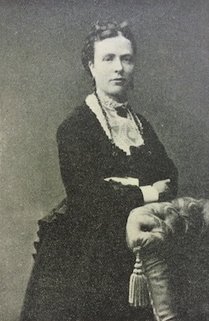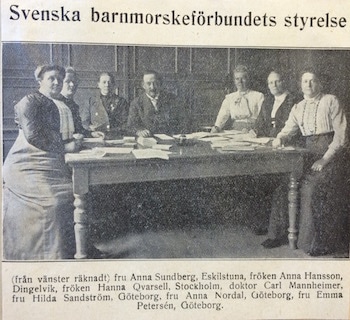Midwife Problems, and Solutions, part 4This is part four of a series on midwifery in Sweden and the United States. To read part one click here, part two click here, part three click here.
This elevation was not only for the good of the profession, but for the good of society. In 1863, one out of every ten women in Sweden would die during childbirth. Giving birth was probably the single scariest moment a woman in the 1800s would experience whether she was in Sweden or the United States. Labor was almost guaranteed to happen -- there was no reliable birth control, and pregnancy was dangerous. Women knew it was painful and could leave them permanently disabled or even kill them. A death left her family motherless, and soon, doctors realized this could be prevented.
Wretlind met Heden in 1876, when they were both teaching at the midwifery school in Goteborg. He moved to Stockholm in 1886, and started publishing and was a member of the Parliament, both things that would make him invaluable to the Midwives Association.
The midwives association, the publication Jordemodern, and the community of midwives elevated the profession before there was even a serious discussion about the safety of childbirth in the United States, or England or Germany for that matter.
Sweden's commitment to regulation and education saved lives, a legacy that still lives on today. All women see a midwife and the focus is on the healthiest birth a mother can have. In the United States, 90% of women see a doctor, a surgical specialist. Birth outcomes show the difference of this culture and history: in Sweden, maternal mortality is 4 per 100,000 live births, while in the U.S. it is nearly three times as high at 14 per 100,000. C-section rates in Sweden are 17%, while they are 33% in the U.S. -- a number that the American College of Obstetricians and Gynecologists has said is too high. Infant mortality in Sweden is 2 deaths per 1,000 births compared with 6 per 1000 in the U.S.
4 Comments
Patricia Nelson
9/29/2017 02:25:57 pm
Hi Kristina, I believe this is the work you did with the help of a scholarship from SWEA Washington DC. So pleased to see your writing! Our members would love it if you could make a presentation to us on this. Please get in touch. Many thanks!
Reply
Elin
3/12/2019 10:05:49 pm
Hi Kristina,
Reply
4/18/2019 04:17:11 pm
That is really interesting that people see a midwife and the focus that is in having the healthiest birth. Maybe it would be good to get a midwife for when we decide to have kids. This is something I am going to have to talk to my wife about sometime soon.
Reply
Your comment will be posted after it is approved.
Leave a Reply. |
Come in, the stacks are open.Away from prying eyes, damaging light, and pilfering hands, the most special collections are kept in closed stacks. You need an appointment to view the objects, letters, and books that open a door to the past. Archives
April 2023
Categories
All
|







 RSS Feed
RSS Feed